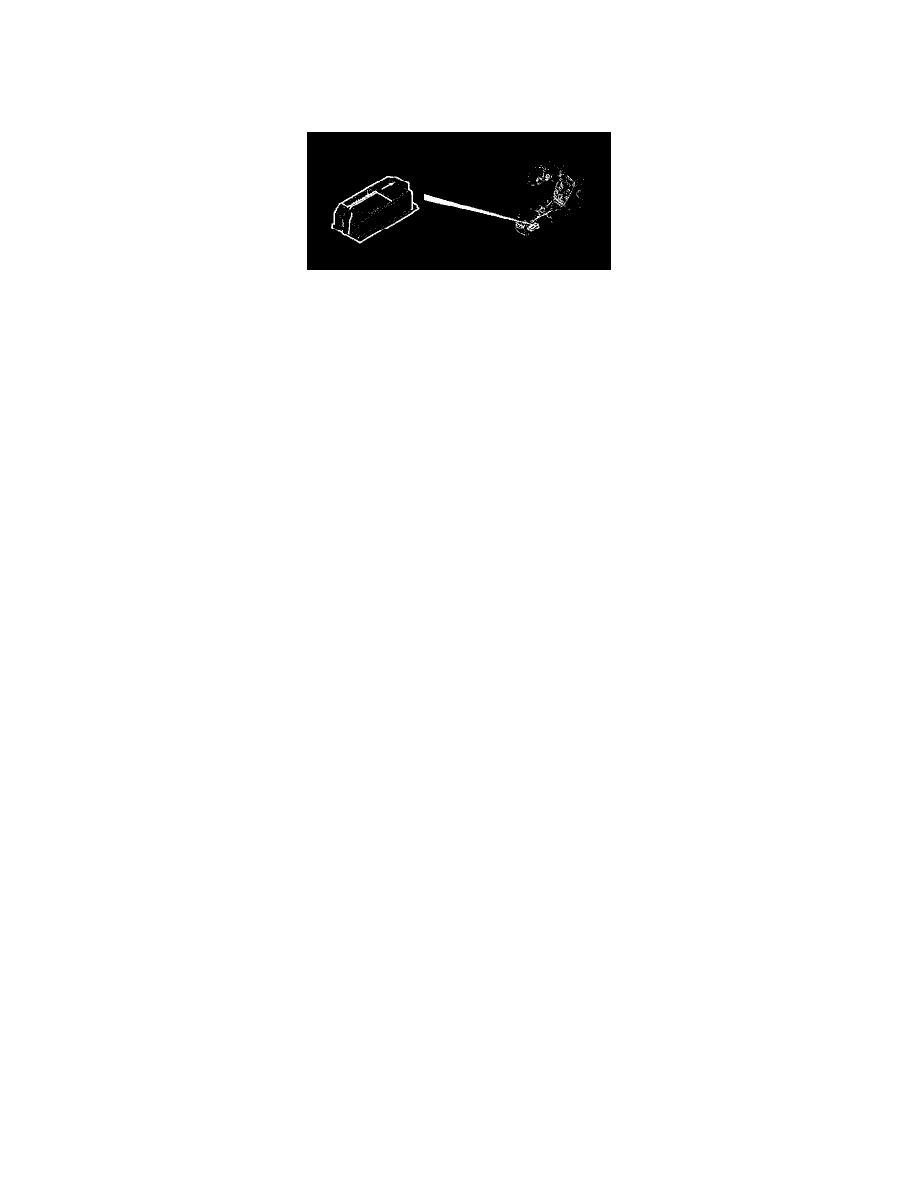V70 2.4T L5-2.4L Turbo VIN 58 B5244T3 (2002)

Air Bag Control Module: Description and Operation
Design, Control Module
Design, Control Module
The task of the supplemental restraint system module (SRS) is to reduce driver and passenger injuries in the event of different types of accidents. This is
carried out by the control module validating incoming collision pulse signals, that is the acceleration signals, triggered by a collision, and to select an
action.
The control module has an internal sensor as assistance, as well as the external crash sensor. The system selects one of the following to activate based on
the collected data:
-
front airbags.
-
the side impact protection (SIPS) bags.
-
the inflatable curtains.
-
the seat belt tensioner.
The crash sensor in the supplemental restraint system module (SRS) registers the longitudinal mechanical stresses which occur in the event of a frontal
collision. A side impact can also be registered by the crash sensor. The longitudinal stresses are measured using two acceleration sensors. When the
longitudinal stresses exceed a certain level a calculation of the stress (the collision pulse) starts.
This evaluates if the impact was great enough to activate the airbags and/or the seat belt tensioners. The seat belt tensioners can be activated without the
air bags being activated, or vice versa.
Airbags and seat belt tensioners can be activated individually. Driver and passenger airbags and seat belt tensioners are designed to deploy in the event
of a frontal collision.
When the collision protection system is activated, the control module transmits a current pulse to the ignition mechanisms in the airbags and/or the seat
belt tensioners. No seat belt tensioners or airbags will be activated in the event of a collision from the rear.
Two requirements need to be fulfilled in order for the side impact protection system to be activated. One; that the collision pulse is so high that a trigger
signal is sent from the side impact sensor to the control module. Two; the control module or another collision sensor transmits a confirmation signal
which makes it possible for the collision protection system to deploy. When the control module has received a trigger signal and a confirmation signal,
the side impact protection system can deploy.
If the side impact occurred at the front of the vehicle the side airbags and the inflatable curtain are deployed on the side that received the impact. If the
side impact occurred at the rear of the vehicle only the inflatable curtain is deployed.
The control module has a collision recording function. This records certain system information in the event of a collision. The information can be
analyzed and used after a collision if required.
This information is used to develop the collision safety systems of the future.
In the event of a collision the supplemental restraint system module (SRS) transmits a collision signal to the phone module (PHM) and the central
electronic module (CEM) via a directly connected cable.
The purpose of the signal is to switch off the fuel pump, to light the interior lighting, to unlock the doors, and if the car is equipped with Volvo On Call
(Plus), to transmit an automatic alarm to the Customer Service Center when the vehicle is involved in an accident. This also applies in the event of a
collision from the rear.
A collision signal is also sent to the phone module (PHM) and the rear electronic module (REM) via the controller area network (CAN).
The control module decides to deploy either the airbags or the seat belt tensioner. This is based on:
-
Whether the driver and passenger front seat belts are being used or not.
-
If there are faults in the side impact sensor or the terminals for.
-
the side impact sensor.
-
If there are faults in the seat belt buckle.
